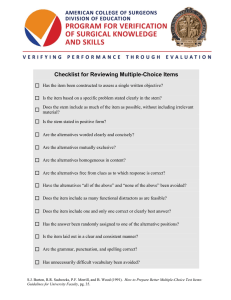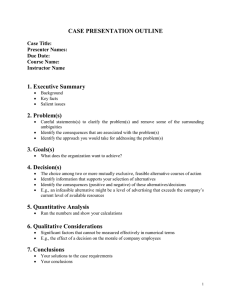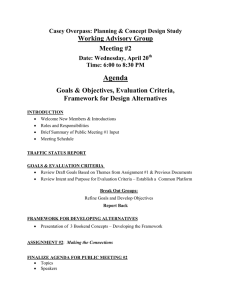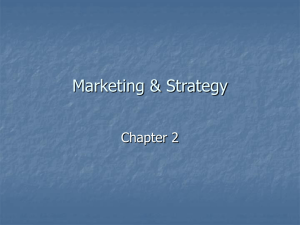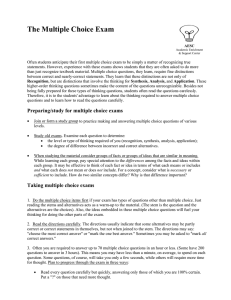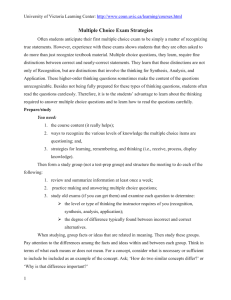Many students seem to have good study habits, acquire information
advertisement
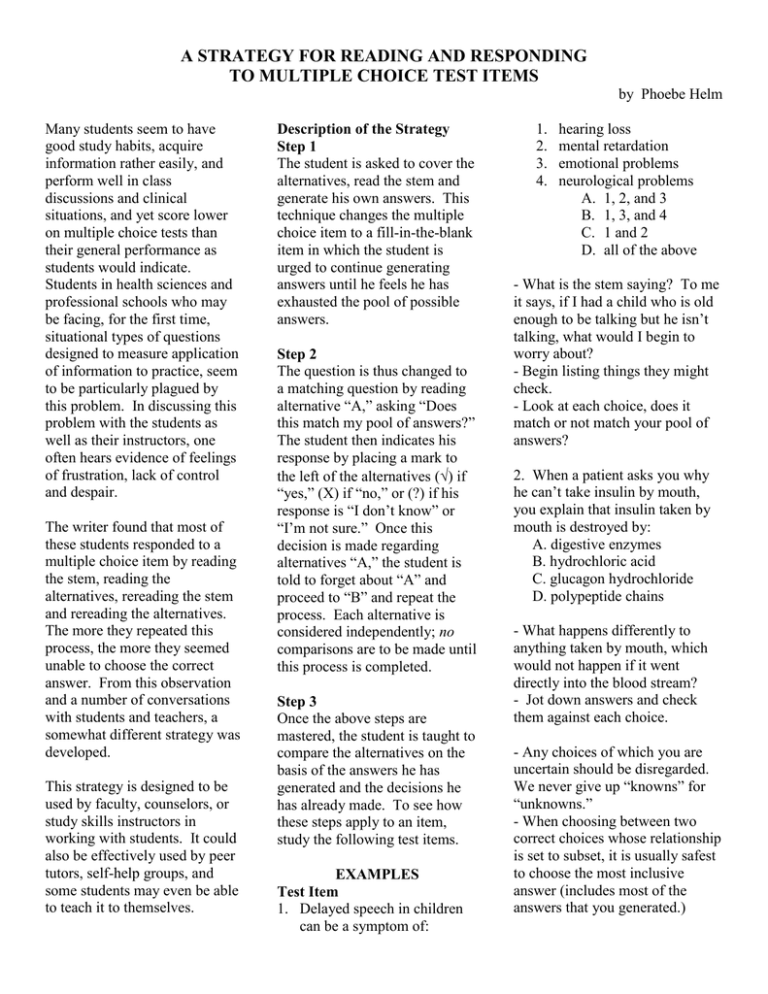
A STRATEGY FOR READING AND RESPONDING TO MULTIPLE CHOICE TEST ITEMS by Phoebe Helm Many students seem to have good study habits, acquire information rather easily, and perform well in class discussions and clinical situations, and yet score lower on multiple choice tests than their general performance as students would indicate. Students in health sciences and professional schools who may be facing, for the first time, situational types of questions designed to measure application of information to practice, seem to be particularly plagued by this problem. In discussing this problem with the students as well as their instructors, one often hears evidence of feelings of frustration, lack of control and despair. The writer found that most of these students responded to a multiple choice item by reading the stem, reading the alternatives, rereading the stem and rereading the alternatives. The more they repeated this process, the more they seemed unable to choose the correct answer. From this observation and a number of conversations with students and teachers, a somewhat different strategy was developed. This strategy is designed to be used by faculty, counselors, or study skills instructors in working with students. It could also be effectively used by peer tutors, self-help groups, and some students may even be able to teach it to themselves. Description of the Strategy Step 1 The student is asked to cover the alternatives, read the stem and generate his own answers. This technique changes the multiple choice item to a fill-in-the-blank item in which the student is urged to continue generating answers until he feels he has exhausted the pool of possible answers. Step 2 The question is thus changed to a matching question by reading alternative “A,” asking “Does this match my pool of answers?” The student then indicates his response by placing a mark to the left of the alternatives () if “yes,” (X) if “no,” or (?) if his response is “I don’t know” or “I’m not sure.” Once this decision is made regarding alternatives “A,” the student is told to forget about “A” and proceed to “B” and repeat the process. Each alternative is considered independently; no comparisons are to be made until this process is completed. Step 3 Once the above steps are mastered, the student is taught to compare the alternatives on the basis of the answers he has generated and the decisions he has already made. To see how these steps apply to an item, study the following test items. EXAMPLES Test Item 1. Delayed speech in children can be a symptom of: 1. 2. 3. 4. hearing loss mental retardation emotional problems neurological problems A. 1, 2, and 3 B. 1, 3, and 4 C. 1 and 2 D. all of the above - What is the stem saying? To me it says, if I had a child who is old enough to be talking but he isn’t talking, what would I begin to worry about? - Begin listing things they might check. - Look at each choice, does it match or not match your pool of answers? 2. When a patient asks you why he can’t take insulin by mouth, you explain that insulin taken by mouth is destroyed by: A. digestive enzymes B. hydrochloric acid C. glucagon hydrochloride D. polypeptide chains - What happens differently to anything taken by mouth, which would not happen if it went directly into the blood stream? - Jot down answers and check them against each choice. - Any choices of which you are uncertain should be disregarded. We never give up “knowns” for “unknowns.” - When choosing between two correct choices whose relationship is set to subset, it is usually safest to choose the most inclusive answer (includes most of the answers that you generated.)
